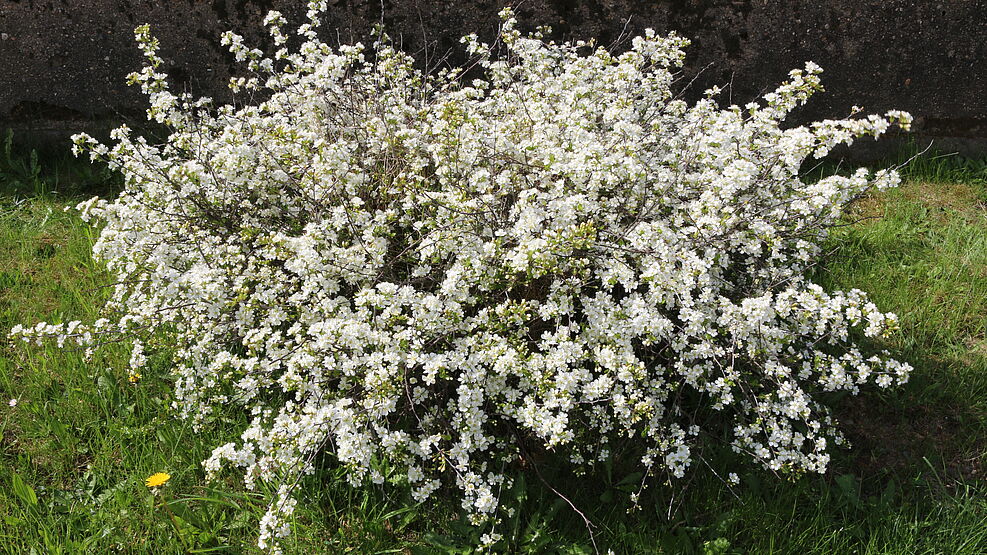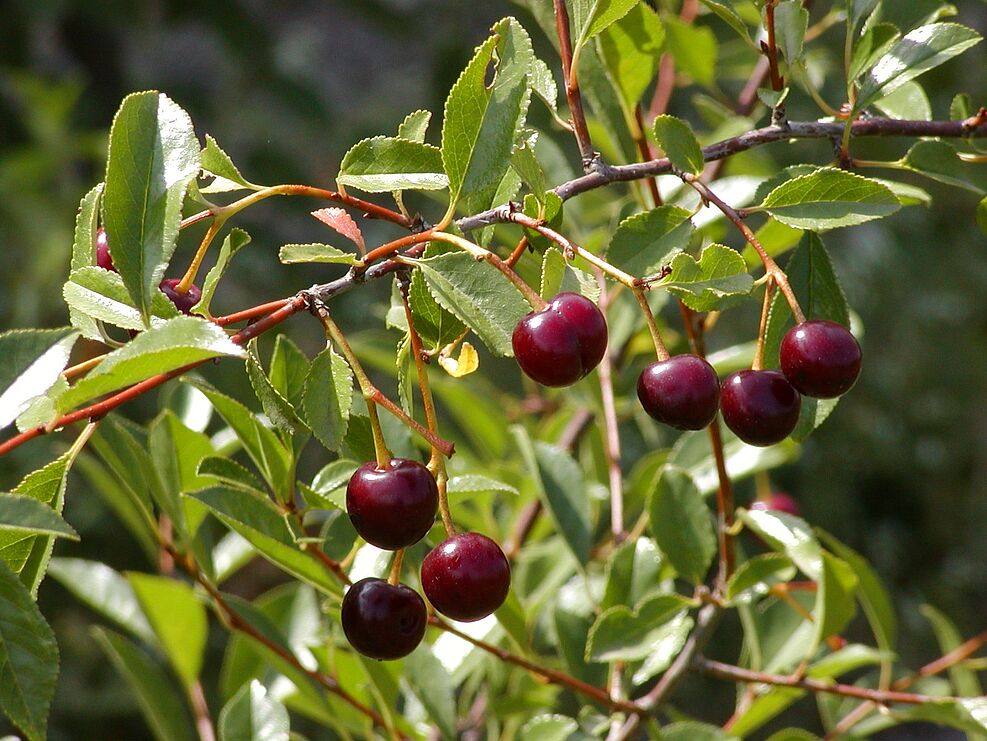The genomes of both ancestors of the sour cherry have now been published. The JKI played a leading role in the study of the ground cherry genome.
Sour cherries (Prunus cerasus L.) such as the well-known variety 'Schattenmorelle' are traditionally found in almost every allotment garden. Whether on a cake, as jam or juice, the fruit enjoys great popularity. Sour cherries are descended from the sweet cherry (P. avium) and the ground cherry (P. fruticosa). A research group of the Julius Kühn Institute (JKI), the Universities of Budapest, Greifswald and Hohenheim and the Dutch company KeyGene has now succeeded in deciphering the genome sequence of the ground cherry. The study, published in the journal “Genomics”, describes the novel technology used to generate long DNA sequences, which enabled the researchers to sequence the largest cherry genome to date, with a length of 1.1 billion bases. The eight base chromosomes derived from this sequence give a total size of 366 million bases.
"With this first genome sequence of the ground cherry, it is possible to better understand the evolutionary development of the sour cherry," explains first author Dr. Thomas Wöhner from the JKI - Institute for Breeding Research on Fruit Crops in Dresden-Pillnitz. Based on the genetic code, the researchers can now assign genes of the ground cherry in the genome of the sour cherry. This knowledge can be practically implemented, as it can now be used to make better predictions about positive or negative traits when breeding new sour cherry varieties. "This will help us make the sour cherry more robust against diseases and fit for climate change in the future," says Wöhner.
Background
Sour cherries originated in Eastern Europe and Asia Minor. One ancestor, the sweet cherry, is widespread throughout Europe and Asia Minor. The ground cherry, the second ancestor, is native to the vast steppes of Eastern Europe and Western Asia. As early as the late 1960s, it was demonstrated that the sour cherry is a natural bastard between the ground cherry and the sweet cherry. While the two parental species initially evolved independently of each other, hybridization later occurred by chance in areas where both species occur simultaneously, resulting in our present-day sour cherries. Consequently, the sour cherry genome consists of two parts. One half of the chromosomes originates from the sweet cherry, while the other half originates from the ground cherry. The genome of the sweet cherry has already been sequenced. For the ground cherry, such a genome sequence was missing until now. With the new genome sequence, all important genetic data are now available to draw conclusions about the structure of the sour cherry genome.
Publication
Wöhner, T., Emeriewen O., Wittenberg A., et. al.: The draft chromosome-level genome assembly of tetraploid ground cherry (Prunus fruticosa Pall.) from long reads. Genomics 113 (2021), 4173-4183. DOI: https://doi.org/10.1016/j.ygeno.2021.11.002
Scientific contact:
Dr. Thomas Wöhner
Julius Kühn-Institut (JKI), Federal Research Centre for Cultivated Plants Institute for Breeding Research on Fruit Crops Pillnitzer Platz 3a, 01326 Dresden
Tel.: 03946 47 8012


